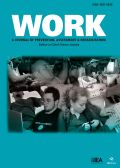Authors: Sejdiu, Rrahim | Jashari, Bujar | Zejnullahu, Fakije | Sylejmani, Blertë | Topuzi, Ramadan
Article Type:
Research Article
Abstract:
BACKGROUND: There are some rules that furniture designers must take into consideration to design ergonomic furniture. The main design principle is the target group for which the furniture will be designed, considering the dimensions of people who use the furniture. OBJECTIVE: The paper presents the correlation between 12 parts of children’s body, as well as the proportion between stature and 11 other parts of the body which are used for the purposes of furniture and interior designers. METHODS: Field measurements include: Stature (S), Sitting height (She), Shoulder height (Sh), Popliteal height (Ph), Hip width (Hb), Elbow
…rest height (Erh), Buttock-popliteal length (Bpl), Buttock-knee length (Bkl), Thigh clearance (Tc), Eye height sitting (Eh), Knee height (Kh) and Shoulder breadth (Sb) to pupils aged 6–11 (grades 1 to 5). The measurements were done in 687 children in 12 primary schools in 4 different regions in Kosovo. RESULTS: The data of the study shows that, in general, there is a correlation (in some parts strong and in some medium) for the measured parts. Also, the study presents the proportion between the stature and other parts of the body which are necessary for the design of children’s furniture. CONCLUSION: Using this data will enable furniture designers to easily target the dimensions of the group they will design, even by measuring only one dimension, i.e. stature and then setting the proportions for each piece separately.
Show more
Keywords: Body, dimension, proportion, children, furniture, designers
DOI: 10.3233/WOR-230435
Citation: Work,
vol. Pre-press, no. Pre-press, pp. 1-17, 2024
Price: EUR 27.50





